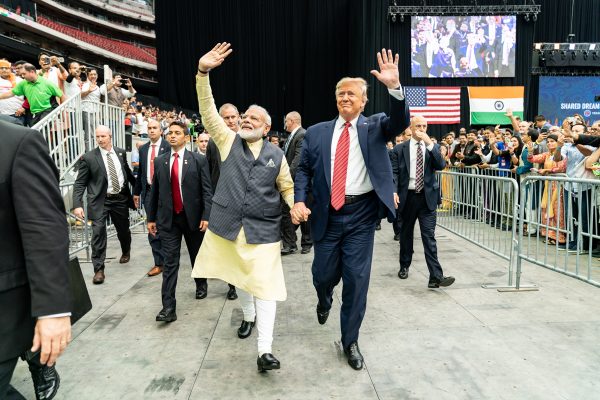
SOURCE: THE DIPLOMAT
An Indian media outlet reported on August 23 that the United States and India seem to be finally ready to sign an agreement to share geospatial defense intelligence. Indian official sources told the Print that the two sides might ink the Basic Exchange and Cooperation Agreement (BECA) during a virtual “2+2” foreign and defense ministers/secretaries’ dialogue in September. BECA is the last of the four “foundational” agreements that underpin deepening defense cooperation between the two countries.
The first was a 2002 agreement to safeguard shared military information, followed by logistics and secure-communication pacts in 2016 and 2018, respectively. When signed, BECA will allow the United States to share satellite and other sensor data with India in order to improve the Indian military’s targeting and navigation capabilities. India and the United States had decided to fast-track the legwork for the agreement during U.S. President Donald Trump’s February India visit.
To be sure, the four foundational agreements are welcome steps to facilitating greater military cooperation between the two countries. But they are also fairly straightforward in nature. Why these arrangements generate so much interest in India – and why their negotiations seem to drag on for years at a time – has much to do with the country’s complicated attitude toward a deeper strategic relationship with the United States. While the Indian left — traditionally opponents of the U.S.-India strategic partnership — has ceased to be politically relevant, the dominant Hindu right has historically rejected American cultural and political influence while realizing, at the same time, that New Delhi’s strategic circumstances demand a closer relationship with Washington.
Matters have not been helped by widespread misunderstanding about the nature of these agreements on the part of a section of the Indian strategic community. At the time of its signing, scholar Bharat Karnad misinterpreted the U.S.-India Logistics Exchange Memorandum of Agreement as a “status of forces agreement” that the U.S. has with certain allies, such as the Philippines, which allows it exclusive basing rights in a foreign territory. In interviews I carried out for a 2018 research paper, a former Indian naval officer told me that some of India’s reservations around being part of a secure military communications network with the U.S. had to do with the fact that Pakistan, being a member of the CENTCOM Partner Network, could potentially tap into Indian military movements. (I had confirmed with U.S. sources that this was highly unlikely given that protected American communication networks with allies and partners do not automatically interface with one another.)
The fact that the texts of this agreements – or even, official summaries – remain classified fuels suspicion in a country deeply protective of its sovereignty and independent foreign policy.
At the same time, the United States has continued to provide quiet but valuable intelligence to India during key crises. It is now known that Washington provided details of Chinese troop movement to India during the 2017 Doklam crisis. It is also quite likely that the Trump administration’s very public stance against China during the ongoing India-China military crisis in eastern Ladakh was driven by independent U.S. intelligence on the situation – and that it was shared with New Delhi.
The four foundational agreements are necessary but far from being sufficient when it comes to ensuring greater smoother coordination between the American and Indian armed services. And significant obstacles remain in ensuring that the two forces can work together seamlessly – in order to deter Chinese adventurism, and should that fail, defend shared interests in war. India’s appetite for Russian weapon systems remain, from Washington’s perspective, remains a sticking point.
Russian sources reported yesterday that Moscow is likely to speed up delivery of the S-400 Triumf anti-aircraft weapon systems to India, with the first regiment arriving next year. The United States has repeatedly warned India that its purchase of that system could attract sanctions, or at the very least, introduce a hard ceiling on military cooperation between the two countries. The American fear here is that plugging a Russian air defense system into the Indian military network that also has U.S. hardware will allow Moscow to identify crucial features of U.S. platforms. From the Indian point of view, as I recently wrote in these virtual pages, big-ticket weapons purchases from Russia are a valuable foreign policy tool. At the moment it is unclear how New Delhi and Washington plan on resolving this contentious issue.
Beyond the issue of Russian arms lies fundamental mismatch between what the United States seeks from India, and what India can deliver. As University of Chicago’s Paul Staniland wrote last year, “India is a hard-pressed power, facing deep domestic challenges and tightly constrained by powerful adversaries on its borders. There are real limits to what it can deliver, yet these often seem better understood in Delhi than in D.C.”
For the time being, baby steps in the right direction will do. And BECA is one of them.






